Naturally, with the arrival of shoppable posts, the link between ecommerce and social is edging ever closer. But that doesn’t mean sticking a ‘buy now’ button on a product image will automatically mean users will convert.
So, how are brands using Instagram to drive both engagement and sales? Here’s a few tips we can learn from some of the biggest fashion and beauty brands on Instagram right now.
(PS. Subscribers can get stuck in to our Social Media Plaforms Overview)
Gucci – Stand out with illustrations
The Instagram feeds of many fashion brands tend to look quite samey, usually filled with product images or editorial photos – perhaps a bit of lifestyle thrown in for good measure.
In contrast to this, designer brand Gucci ensures it stands out with a highly original and eye-catching Instagram strategy. Alongside high-fashion editorial-style shoots, it often uses illustrators to bring to life a theme or story related to a product or seasonal range.
While it is one of the less ‘shoppable’ brands in this list – never really pointing users to buy products – its combination of striking visuals and storytelling means that it is one of the most memorable.
Boohoo – Tap into pop culture
Boohoo integrates a wide variety of posts into its feed, tapping into what its audience is talking about – often veering into non-fashion related topics.
In this sense, it tends to use Instagram as more of a real-time platform, clearly taking note of what’s popular and trending in the moment.
Recently, for example, it focused heavily on the Royal wedding, cleverly using it in conjunction with the release of a copycat dress. It also creates its own branded memes, too, using pop-culture related conversation to increase the likelihood of shares.
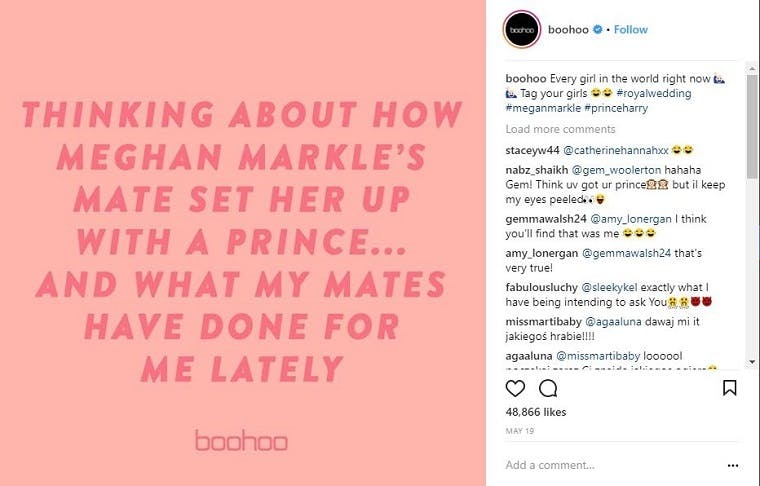
In doing so, Boohoo helps to ensure that it stays relevant – both in terms of its own brand image and its visibility on Instagram.
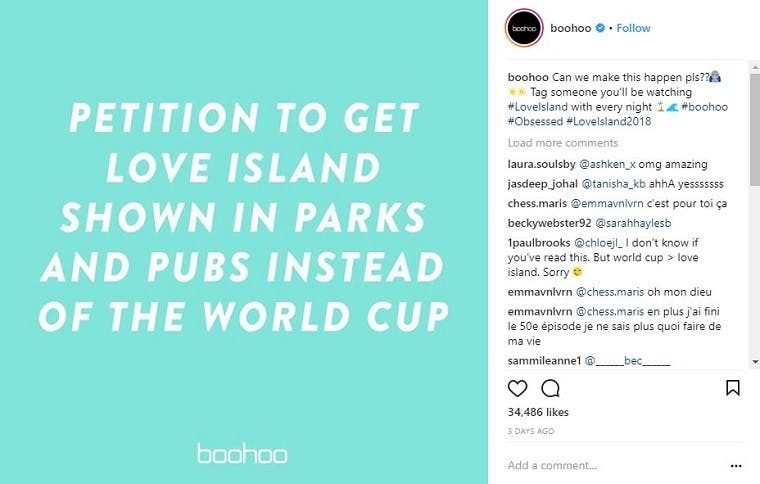
Nordstrom Rack – Go behind the scenes
According to Instagram, one-third of the most popular Insta Stories are created by brands, with 300 million users now using the feature on a daily basis.
For fashion brands, who typically use standard Instagram posts to convey a carefully curated and polished image, Stories allows them to showcase a more relaxed and casual side.
Nordstrom Rack, which is the discounted offshoot of Nordstrom, often uses Instagram Stories to do just this. For example, giving users a behind-the-scenes look at one of its fashion shoots.
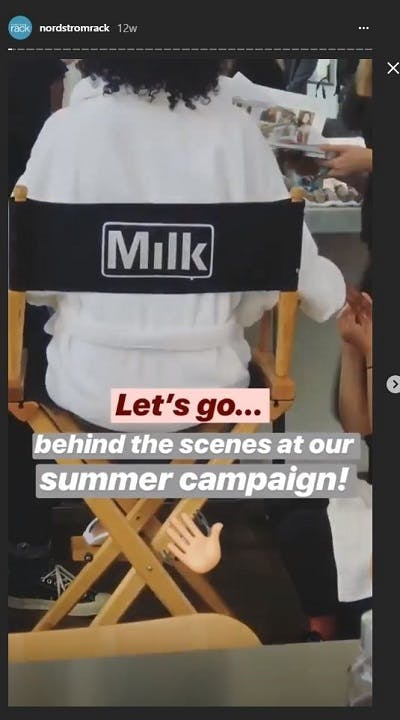
Not only does this give users a sneak-peek at upcoming trends, but the fleeting nature of Stories means that people are likely to pay more attention in-the-moment. This is because watching Stories naturally generates greater levels of attention, where as standard imagery is easier to scroll past and ignore in the feed.
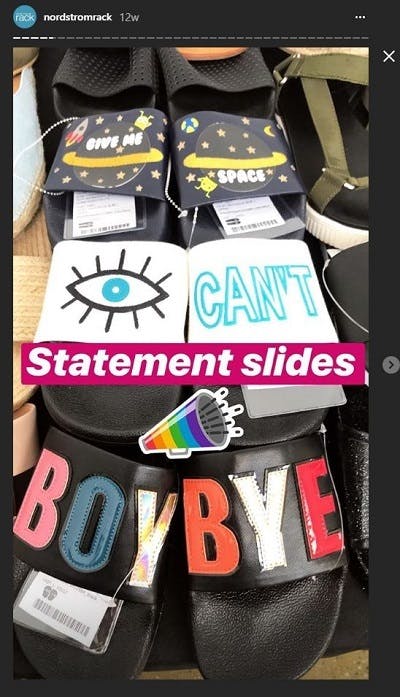
Converse – Showcase products via Stories
Another brand to use Stories in an effective way is Converse. However, instead of doing so to show behind the scenes, it creates Stories to correlate with product-focused posts.
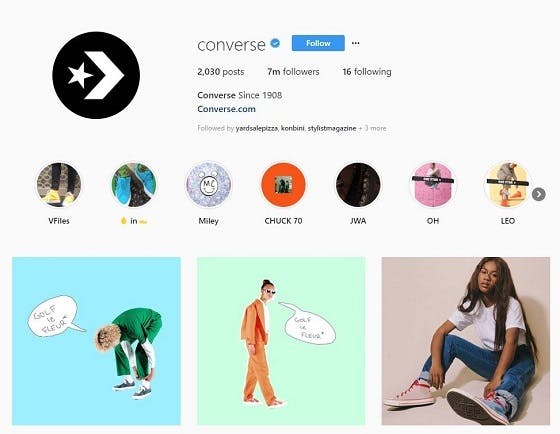
This means that if it posts a standard image of a pair of shoes – its new collaboration with rapper Tyler the Creator, for example, it will also post corresponding Stories to bring it to life.
It also uses Stories to highlight specific details about products, such as information about fabric and material.
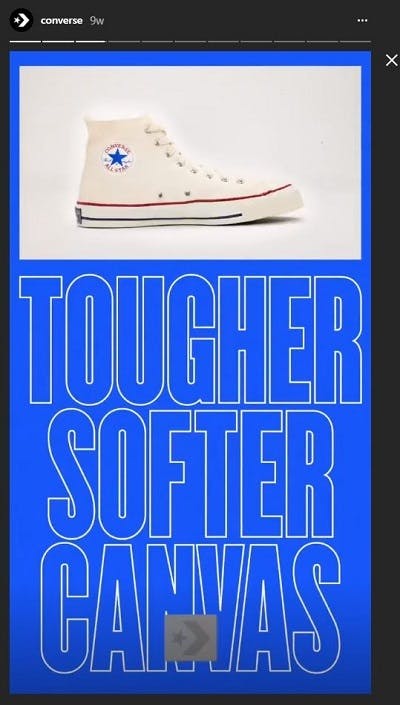
The benefit of this is that the original post piques the interest of users, while Stories then prompts them to actively engage. Stories also tend to include the option of ‘swipe to buy’, meaning that users have a direct next step.
Zara – Support creative talent
Another brand that takes a creative angle is Zara. It does so by promoting its partnerships with artists and people in the creative industry, using the hashtag #supportedbyzara to highlight its initiatives.
Alongside this, the brand has also used Instagram to engage with more creatively-minded consumers, asking its audience to tag their own photography using the hashtag #wearyourphoto, with the best four then selected to be printed on Zara clothing.
By supporting and encouraging creativity, Zara is able to somewhat dispel its ‘fast fashion’ image, helping to establish a more meaningful connection with users based on shared interests.
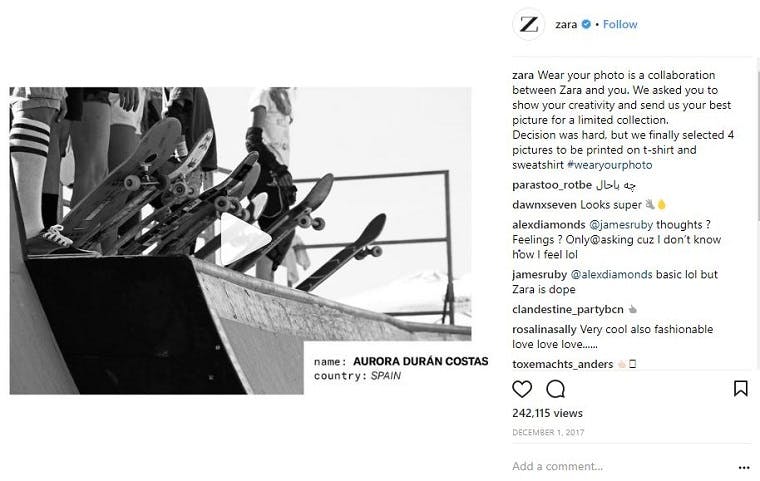
River Island – Curate outfits
Just a few months ago, Instagram rolled out its shopping update to the UK, allowing brands and businesses to sell products in posts.
Surprisingly, many big retailers (including ASOS) have yet to make use of the feature, instead sticking to codes and brand-tagging to point users towards products.
A select few have capitalised on it, however, with River Island being a good example of how to create a seamless experience for users who want to buy what they see.
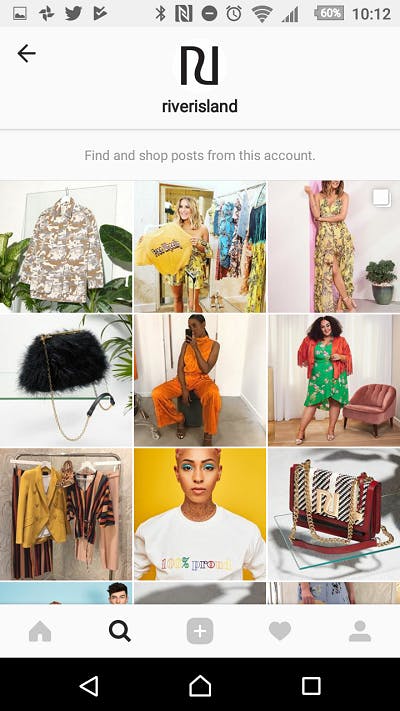
Another effective tactic used is showcasing multiple or coordinating outfits in these posts, instead of simply one dress or a pair of shoes.
In doing so, it offers personal styling tips and advice as well as inspiration, allowing shoppers to click through to buy entire outfits there and then.
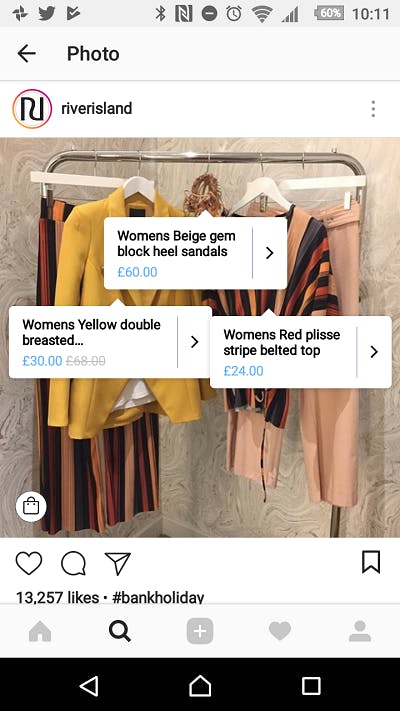
Fenty Beauty – Create a community
Fenty Beauty arguably has a head-start when it comes to social media, with Rihanna fans automatically creating an in-built audience for the brand. However, Fenty is also clever in how it capitalises on this interest, creating an almost cult-like community on Instagram.
Alongside using influencers to promote products, the brand interacts with its audience, surprising and rewarding its biggest fans on a regular basis.
It also likes to holds competitions, such as the #stunnamom contest, to further encourage people to get involved. As a result, it ensures users have a reason to engage with the brand on the platform, while helping to continue the cycle of advocacy.
Benefit Cosmetics – Engage with GIFs
The use of GIFs in marketing has exploded in recent times.
Cosmetics brand Benefit has recently jumped on this trend, launching its own set of branded GIF’s in partnership with Giphy – a platform that itself has over 300 million daily users.
Unsurprisingly, Benefit is looking to capture a slice of this pie, specifically Generation Z, who typically use GIFs in everyday communication. With this demographic also holding powerful purchase power, it is fast becoming a target for the brand.
Quick, compelling, and on-trend – GIFs can be a great way to convey a message. With Benefits’ examples highlighting the brand’s quirky and spirited tone of voice, it’s clearly hoping the tactic will capture the attention (and social currency) of young make-up fans.
M&S – Celebrate endorsement
While M&S certainly has more pressing matters to focus on, its social media strategy is not to be sniffed at. While its Instagram practice is fairly standard, integrating product and seasonal imagery, it does use some clever tactics to reach a wider audience – namely celebrity endorsement.
If, for example, TV presenter Holly Willoughby puts up an image of herself wearing M&S, the brand will then repost it on its own channel.
As well as generating attention on the back of Willoughby’s high-profile, this also gives M&S a sense of authenticity, highlighting natural advocacy towards the brand.
We can only imagine the level of excitement in its social media team when Megan Markle was photographed wearing an M&S jumper.
More on Instagram:


Comments